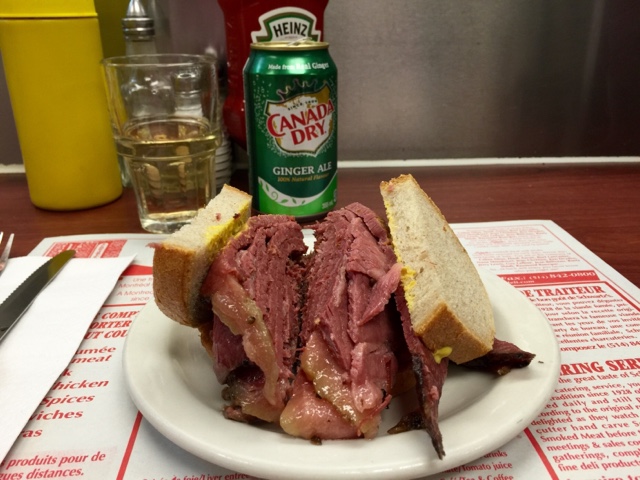The line was out the door, always a good sign.
Sure, they've added unconventional flavors, a crime against bagels. But they sell reasonably priced smoked salmon and homemade matzoh. (I skipped this because I was down to my last $10.)
They proudly proclaim they were the first bagels in Space (sic), Mission STD-124.
Look at that slab of dough! The man in front of me was getting six of everything to take back to Alberta. He even bought a bag of sesame seeds.
Outside I bit into my tout garni, not warm but with a hefty chew, to see what the fuss was about. And as I've said about so many things on this trip, I would return just for another Fairmount bagel covered in seeds.
This picture is on the back of their business cards. The only part it gets wrong is all the white faces. Part of what gives Montreal its spirit is immigrants: the Moroccan man who insisted on helping with my suitcase to the metro station, the French owner of my guesthouse, the taxi driver who told me I would love it here, and feel at home. And I did. The people who live in Montreal call it a village. It's also not an accident that the most authentic bagel shop in NYC today is Thai owned.
Tonight I will sleep in my own bed, in a country not so far from Mile End and Le Plateau Mont-Royal. And dream of excuses to come back to charming Quebec.
















































